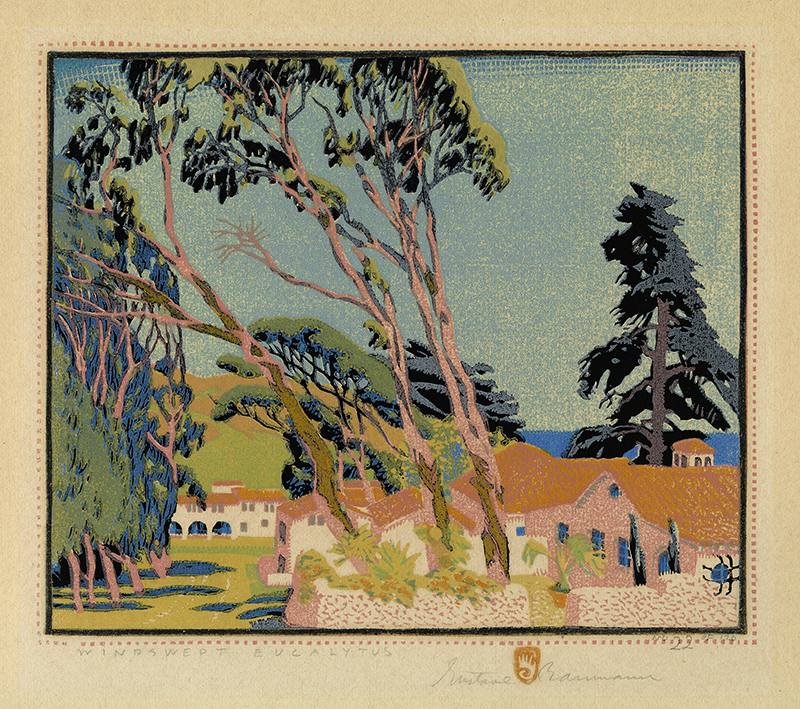Windswept Eucalyptus is a color woodcut created in 1928 by American master printmaker Gustave Baumann. It is pencil signed, titled, and editioned NO 22 of 100 and was printed by the artist from six blocks on cream Zanders laid paper with Bergisch Gladbach watermark. The image measures 9-5/8 x 11-3/8 inches. The reference for Windswept Eucalyptus is Chamberlain 129. For an explanation of the various printing campaigns, we refer you to pages 360-361 of In A Modern Rendering The Color Woodcuts of Gustave Baumann: A Catalogue Raisonné.
Windswept Eucalyptus is from the first series of color woodcuts inspired by Baumann’s road trip along the coastline of California in Spring 1928. Baumann recorded his travels in his letters and telegrams to his wife, Jane. He camped outside of the village of Laguna Beach and commented that the villagers were trying to make it into a year-round city and predicted that someday a boulevard would be constructed along the coastal route. The locale of this woodcut is Laguna Beach. The adobe buildings with tile roofs and ironwork decorations show the influence of the Spanish heritage of California. The Pacific Ocean is visible, and the quiet charm of the setting is a reminder of California in its golden age, before the population explosion and subsequent development.
Gustave Baumann was born in Magdeburg, Germany on 27 June 1881. Ten years later his family immigrated to the US, settling in Chicago. In 1896, Baumann began working in the commercial art field while saving money to study in Germany. After returning from Munich in December 1905 where he studied at the Kunstgewerbeschule, Baumann worked again in commercial art to support his family. In 1909, he discovered Brown County, Indiana where life was inexpensive and he could stay for three months. He produced a series of small format color woodcuts featuring the people and places of Brown County and then produced five large format color woodcuts. His woodcuts were accepted by the committee for the 1915 Panama Pacific International Exposition and he won a gold medal in 1916. Baumann headed east to Wyoming, New York in 1917 and taught at a summer school. From there he headed to Provincetown and New York City before returning to set up his studio in Wyoming. The southwest beckoned and he headed west in May 1918, stopping in Taos for the summer and fall. His funds were low and he needed to head back to Chicago but first stopped at the new art museum in Santa Fe to see an exhibition of his woodcuts. The rest, they say, is history.



